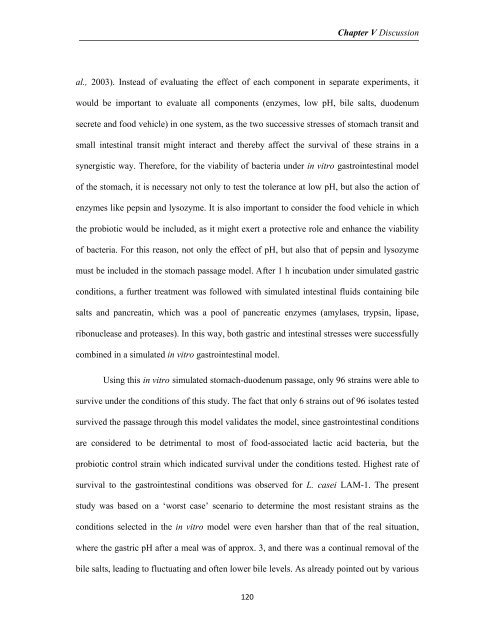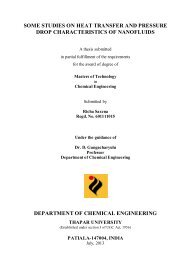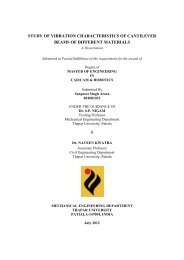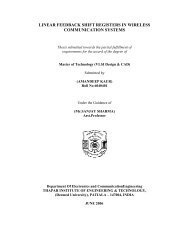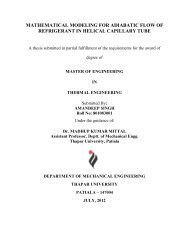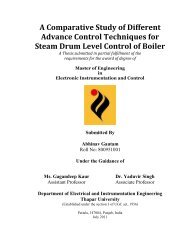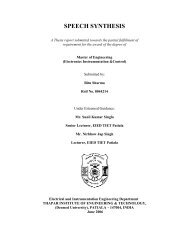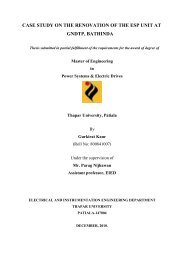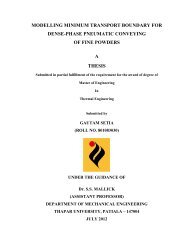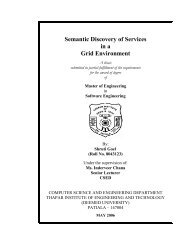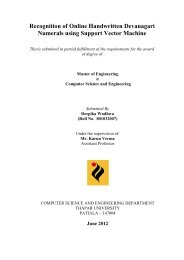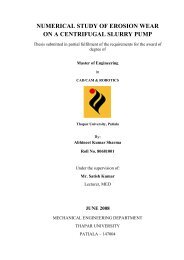from indigenous fermented foods and human gut ... - Thapar University
from indigenous fermented foods and human gut ... - Thapar University
from indigenous fermented foods and human gut ... - Thapar University
Create successful ePaper yourself
Turn your PDF publications into a flip-book with our unique Google optimized e-Paper software.
120<br />
Chapter V Discussion<br />
al., 2003). Instead of evaluating the effect of each component in separate experiments, it<br />
would be important to evaluate all components (enzymes, low pH, bile salts, duodenum<br />
secrete <strong>and</strong> food vehicle) in one system, as the two successive stresses of stomach transit <strong>and</strong><br />
small intestinal transit might interact <strong>and</strong> thereby affect the survival of these strains in a<br />
synergistic way. Therefore, for the viability of bacteria under in vitro gastrointestinal model<br />
of the stomach, it is necessary not only to test the tolerance at low pH, but also the action of<br />
enzymes like pepsin <strong>and</strong> lysozyme. It is also important to consider the food vehicle in which<br />
the probiotic would be included, as it might exert a protective role <strong>and</strong> enhance the viability<br />
of bacteria. For this reason, not only the effect of pH, but also that of pepsin <strong>and</strong> lysozyme<br />
must be included in the stomach passage model. After 1 h incubation under simulated gastric<br />
conditions, a further treatment was followed with simulated intestinal fluids containing bile<br />
salts <strong>and</strong> pancreatin, which was a pool of pancreatic enzymes (amylases, trypsin, lipase,<br />
ribonuclease <strong>and</strong> proteases). In this way, both gastric <strong>and</strong> intestinal stresses were successfully<br />
combined in a simulated in vitro gastrointestinal model.<br />
Using this in vitro simulated stomach-duodenum passage, only 96 strains were able to<br />
survive under the conditions of this study. The fact that only 6 strains out of 96 isolates tested<br />
survived the passage through this model validates the model, since gastrointestinal conditions<br />
are considered to be detrimental to most of food-associated lactic acid bacteria, but the<br />
probiotic control strain which indicated survival under the conditions tested. Highest rate of<br />
survival to the gastrointestinal conditions was observed for L. casei LAM-1. The present<br />
study was based on a ‘worst case’ scenario to determine the most resistant strains as the<br />
conditions selected in the in vitro model were even harsher than that of the real situation,<br />
where the gastric pH after a meal was of approx. 3, <strong>and</strong> there was a continual removal of the<br />
bile salts, leading to fluctuating <strong>and</strong> often lower bile levels. As already pointed out by various


